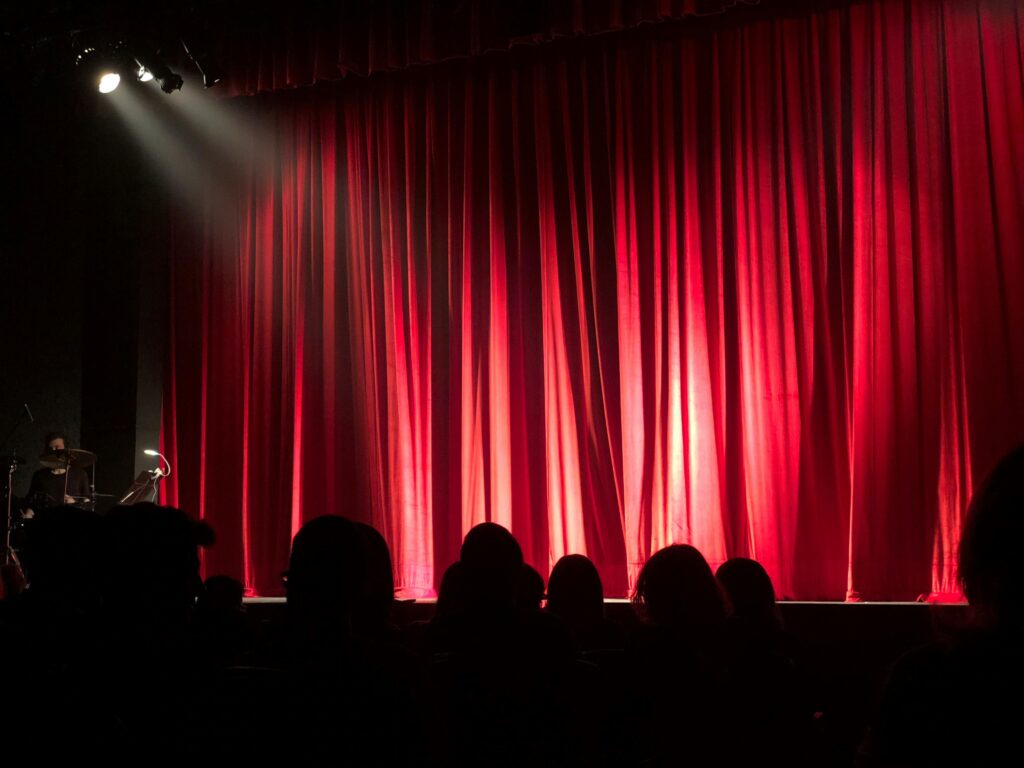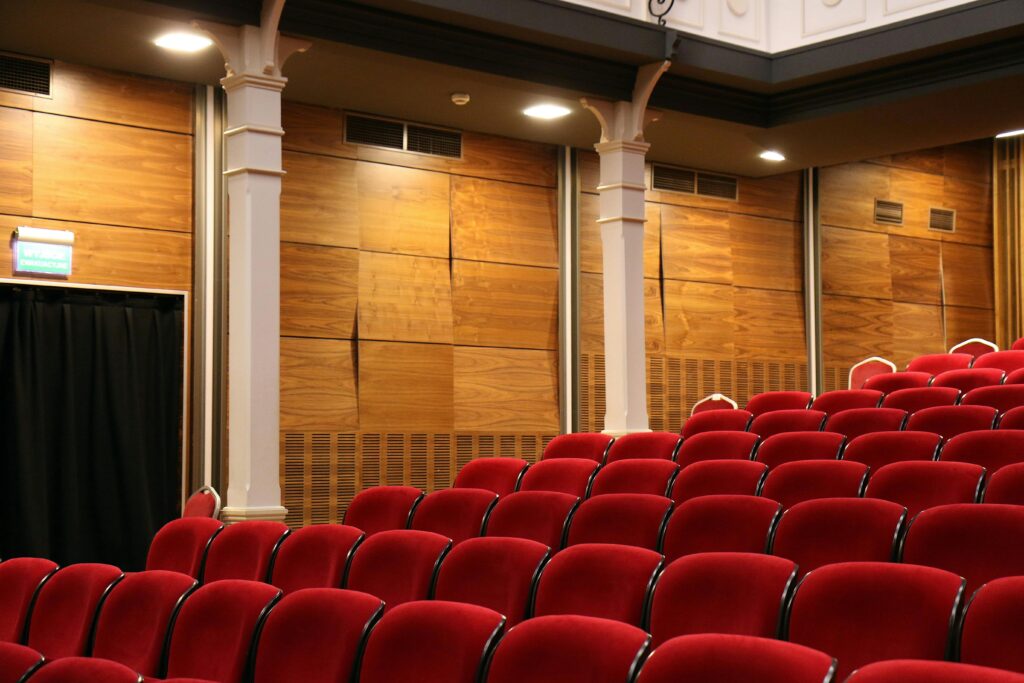
The live event market is currently booming, making a huge resurgence within the wider entertainment industry. With the pandemic becoming something of a distant memory, the general public is becoming much more comfortable in crowded spaces again, with live performances and concerts generating billions of pounds a year. The joy of experiencing live theatrical performances in a theatre is in a unique position to capitalise on this trend. However, with many theatres being housed in older Grade listed buildings, the question remains how theatres can deliver accessibility for the broadest number of people, ensuring that seats are filled with a diverse, multi-generational audience for years to come.
Most theatres have great community value and come with a rich heritage, which is often built into the walls themselves. But many of them have not renovated their facilities enough out bring them into the modern age. We’ve seen such an approach taken with cinemas, where a comfortable experience for patrons is prioritised over cramming in as many people in as possible. Fitting in tables and reclinable seats were no doubt expensive ventures for cinemas, but when it comes to creating an accessible environment – it does not need to come at a bank-breaking cost.
In fact, our our people at Direct Access, when auditing, cannot suggest drastic changes to physical elements at theatres due to legal protection and preservation purposes (Grade listing). So instead, we try to suggest innovative alternatives that allow disabled people to engage with age-old artistry through cutting-edge technology, rather than suggesting fundamental changes to the physical structure.
Let’s go over some of them!
A ‘view from seat’ feature incorporated into the booking process is a valuable tool to enhance user experience and assist individuals in making informed decisions. By offering this feature, users can preview the perspective they would have from a specific seat, helping them visualise and assess their preferred view before finalising their booking.
This feature can be particularly beneficial for individuals with specific preferences or requirements, such as those who may have mobility limitations and need to ensure they have easy access or a clear view, or for those attending events where the view plays a crucial role in their overall experience. Additionally, providing this visual representation can help alleviate uncertainties and increase user confidence in their booking choices.
Overall, integrating a ‘view from seat’ option in the booking process adds a layer of transparency and convenience for users, ultimately enhancing their overall satisfaction and ensuring that their expectations align with the experience they will have.
For those who might not be as familiar with technology involve in this style of booking, ensuring that telephone and in-person booking remains an option.
Additionally, you can ask to opt customers after their booking to a mailing list which will alert them to future accessible or assisted performances (more on this below!).
In the pursuit of accessibility for all, creating an accessible environment for the individual is paramount. And because no two people are the same, it’s important to cater a variety of ways to engage with performances. Most theatres might offer autism-friendly showings for instance, but how often are assisted performances facilitating audio-described, captioned or live BSL interpretations of performances? The reality is that very few make the effort – but providing them can get your show out to a whole new audience.
Relaxed, quieter shows are also few and far between, but are massively beneficial for those with sensory sensitivity. Typically, these would feature a lower sound level, especially for startling or loud sounds. Lights would remain on at a low level in the theater during the performance – and a reduction of strobe lighting and lighting focused on the audience would make an audience member who prefers this style of performance feel more relaxed due to the increased predictability. And this benefits not just disabled people, but older adults and young people too.
Offering touch tours before audio described performances are a great addition too, which would allow audience members with visual impairments to experience parts of the stage, set, or any particular props used in the experience, helping them to imagine the world being created on stage by the talent.

Due to most theatrical performances finishing late into the evening, it is extremely likely that there will be a rush to leave the building as soon as the lights come up. Often, this has little to do with impatience on part of the audience member, but more to do with the that many people do not arrive by car and are in a hurry to catch that last train or bus. So to make egress less stressful for your disabled patrons, providing after-show transportation to the nearest public transport connections can be extremely beneficial. Additionally, providing multiple exit routes can ease the congestion and create a better flow of people leaving, which would be very helpful for those who suffer with anxiety or struggle with crowds.
Advertising your after-show transport options (as well as details of any local transport connections or local accommodation) on your website /social media makes the wholistic experience of an individual coming out to a performance, not just the performance itself, enjoyable and stress-free.
In fact, before a show has even started, theater staff might also consider asking disabled visitors if they have any particular access requirements at reception/ booking counters. This would be a best practice strategy ensuring all visitors feel welcome and that their needs have been considered. Bust best of all, it allows theatres to gain feedback when certain access requirements cannot be immediately catered for.
Use contrasting colours, symbols and large print to make access or marketing information stand out in your seasonal brochures! Don’t forget to have accessible formats of all kinds of event promotion, whether it be large print programmes or captioned video trailers online – it all contributes to your theatre being perceived as an inclusive environment that is acutely aware of the variation of the human experience. If you have any QR codes on site, whether on posters outside the building or on leaflets in the lobby, ensure that the content the QR links to is also accessible. For instance, if the information being presented is visual – ensure audio descriptions are available. If the information has audio, ensure BSL interpretations are available.
Providing an accessibility page on your website with an up to date accessibility statement (which can be navigated to from the homepage of your website) is vitally important. Without easy access to such a page – disabled people will by default assume that accessibility is simple not a priority for your theatre.
Once you have created one, ensuring that the page is regularly updated (and that theatregoers can offer feedback) is vital. To ensure this happens, you might consider hiring a specific employee to handle these queries, (an ‘Accessibility Champion’) – who will listen to feedback and make local management aware of it, as well as ensure any new details about accessible policy or procedure are regularly implemented.
You might also consider sending a follow-up email after performances with a survey that specifically asks for visitor feedback – making sure your team are aware at all times where its strengths and weaknesses are when it comes to access.